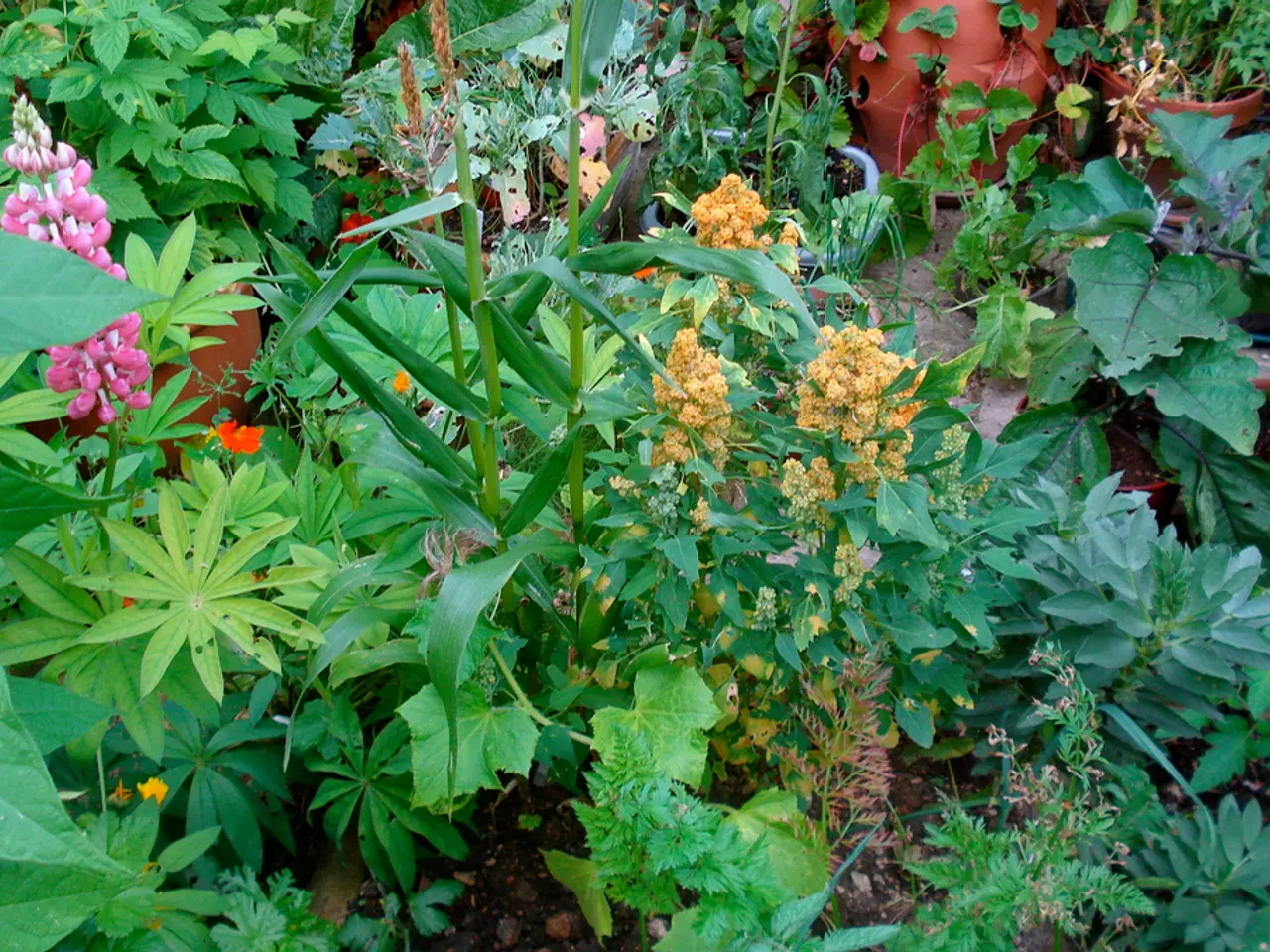Protecting Your Organic Plants from Illnesses
In the realm of organic gardening, maintaining a healthy and thriving garden requires a proactive approach to common diseases and issues. Here, we delve into the most prevalent organic plant diseases and their prevention strategies, ensuring a successful and chemical-free harvest.
Organic gardening eschews the use of pesticides and other chemicals, instead relying on natural methods to combat diseases. However, it is crucial to exercise caution when using certain bactericides and fungicides, as they can sometimes be more harmful than helpful.
### Common Organic Plant Diseases
One of the most notorious diseases is Southern Blight, caused by the fungus *Athelia rolfsii*. Symptoms include drooping leaves and brown, dry rot on stems near the soil, thriving in warm, moist conditions and persisting in soil for years. Damping-off Disease, caused by fungi *Pythium* and *Rhizoctonia*, affects seedlings, causing them to wilt and die soon after emergence, particularly in cool, wet, rich soils.
Nematode Infestation, such as root-knot nematodes *Meloidogyne spp.*, causes stunted growth, swollen or galled roots, and yellowing foliage, particularly damaging to root crops like carrots. Powdery Mildew and Downy Mildew are common fungal diseases affecting many plant types, known for powdery or fuzzy fungal growth on leaves. Root Rot, caused by soilborne pathogens, leads to decayed roots and poor plant vigor, while Mosaic Virus causes mottled leaf coloring and stunted growth in various plants.
### Organic Prevention Methods
Prevention is key in organic gardening, particularly in fighting off fungus. Crop Rotation, Sanitation, and Soil Management are essential techniques in this regard. By avoiding planting susceptible crops successively in the same soil, breaking disease and pest life cycles, gardeners can significantly reduce the risk of various diseases. Removing plant debris immediately after harvest and employing soil solarization (covering soil with clear plastic in hot months) can further aid in disease prevention.
Choosing plant varieties that are less susceptible to specific diseases or pests, such as nematodes, is another effective method. Soil health management, incorporating high-quality compost to encourage beneficial microbes that suppress pathogens, is also crucial. Seed and seedling care, such as starting seeds indoors in sterilized potting mix, avoiding overly nitrogen-rich soil at seeding, and allowing soil surface to dry between waterings, can prevent damping-off.
Companion Planting and Biological Controls, such as using marigolds that naturally suppress nematodes, introducing beneficial nematodes (*Steinernema spp.*) to control harmful species, and encouraging beneficial insects like ladybugs and parasitic wasps to control pest populations, are additional organic prevention methods. Physical Barriers and Mulching, applying organic mulch such as straw or shredded leaves to reduce soil temperature fluctuations and suppress pests, and using row covers to physically block pests, are also effective strategies.
Natural Sprays, such as neem oil, insecticidal soap, or botanical pesticides (e.g., pyrethrin), can deter pests and reduce disease vectors. However, it is essential to test these sprays on plants first to ensure compatibility.
By combining these techniques—crop rotation, sanitation, resistant varieties, biological controls, soil health management, and natural sprays—organic gardeners can effectively prevent and manage common plant diseases while maintaining a healthy, chemical-free garden ecosystem.
Gardeners should also wash their hands before gardening to prevent spreading bacteria, viruses, and fungus to plants. Standing water on organic plants can be a home for rot and mildew; watering the garden in the morning allows the sun to dry the water from the leaves throughout the day. Infected plants will have discolored and distorted leaves and will be stunted. Learning about common plant diseases in the local area is important for organic gardening.
Organic gardening involves planting organic plants suitable for the local area and ensuring that they receive plenty of nutrients in the ground to grow. When harvesting vegetables, use a clean bucket or basket and wash your hands before harvesting and clean your vegetables using cold, clear water.
References: [1] National Gardening Association. (n.d.). Southern Blight. Retrieved from https://www.gardenmyths.com/myths/southern-blight/ [2] National Gardening Association. (n.d.). Nematodes. Retrieved from https://www.gardenmyths.com/myths/nematodes/ [3] National Gardening Association. (n.d.). Fungal Diseases. Retrieved from https://www.gardenmyths.com/myths/fungal-diseases/ [4] National Gardening Association. (n.d.). Biological Controls. Retrieved from https://www.gardenmyths.com/myths/biological-controls/
In the sphere of lifestyle and home-and-garden, organic gardening adopts natural methods to combat diseases, avoiding harmful pesticides. organic plant diseases such as Southern Blight, Damping-off Disease, Nematode Infestation, Powdery Mildew, Downy Mildew, Root Rot, and Mosaic Virus, require proactive prevention strategies. Prevention techniques include crop rotation, sanitation, soil management, choosing resistant plant varieties, biological controls, companion planting, natural sprays, physical barriers, and mulching. Maintaining a healthy, chemical-free garden is achieved by adhering to these methods and learning about local diseases for successful organic gardening. gardening practices such as washing hands before gardening and watering plants in the morning help prevent the spread of diseases.




